When you think of the wine regions endowed with great natural beauty around the world, Hungary’s vine-covered hillsides are unlikely to come to mind. But these top ten Hungarian districts can more than hold their own.
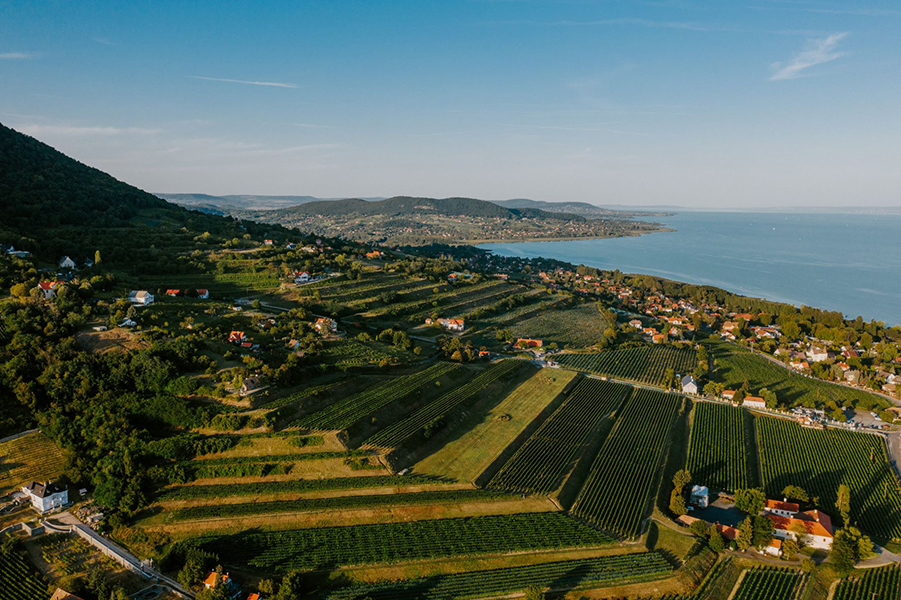
Badascony Wine Region (Photo: Courtesy of Visit Hungary)
Hungary’s 22 wine districts, scattered over six wine regions, produce roughly 318,000 liters of wine annually, making it the 15th most active wine-producing country in the world. And while Hungarians appreciate the variety and quality of their “bor” (“wine” in Hungarian), their wines aren’t well known outside of the country. Hungary has been an active wine-producing region for many centuries. Despite a Communism-era lul, the last 25 years have seen Hungary’s vineyards and attendant wine-tourism grow rapidly. We asked ten Budapest wine experts to name their favorite regions. Here’s their list.
Badacsony
Sitting at the bottom of Szent György (St. George’s Hill) in the Badacsony region of Hungary, is Bencze Birtok, Jean-Julien Ricard’s favorite winery in his favorite wine-growing region. Ricard, owner of Marloy Wine Bar and Store, says, “the volcanic soil, high in minerals, produces balanced wines, beautiful freshness, complex flavor, and a nice length. Especially from white varietals made from native grapes.” The region sits along the banks of Lake Balaton, the largest lake in Central Europe, and a weekend break destination for the city-dwellers of Budapest.
Szekszárd
David Polák of Palack Winebar loves the medium and full-bodied red wines produced in the southeastern Hungarian region of Szekszárd. One of his favorite places to drink his wine there is from the terrace of the Heimann Winery where, he says, “the view is awesome. The view of the hills and chill of the valleys of Szekszárd are beautiful.” With the Danube-Drava National Park right there too, it’s a great place for outdoors pursuits.
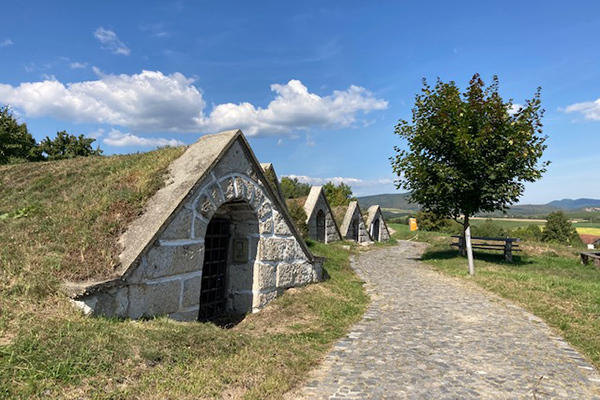
Hegyalja, Tokaj (Photo: Courtesy of Carole Rosenblat)
Tokaj
Carolyn Bánfalvi, co-owner of Taste Hungary and The Tasting Table Budapest, chose an entire region, as she loves all of Tokaj’s different wine categories. “It’s Hungary’s most prestigious, and also one of the world’s oldest classified wine regions.” The first mention of Tokaj as a wine-producing region dates to 1067. “Tokaj is purely a white wine region, located in the diverse volcanic hills of northeastern Hungary.” This UNESCO World Heritage Site is also known for its historic wine cellars “like labyrinths carved deep into the hills.” Bánfalvi recommends visiting the cellars in Hercegkút.
Somló
Growing on the sides of an extinct volcano gives the grapes that produce the wines of Somló the distinctive mineral quality that János Laczi, owner of Galéria12 Kávézó és Borbár, loves. His favorite wine is the 2018 Kolonics Juhfark. “It was made mostly from berries, spontaneously fermented after a short soaking, and matured in 100% Hungarian and French oak barrels for eight months.” Somló in the springtime is especially beautiful as the fragrant Mahaleb Cherry trees dot the area.
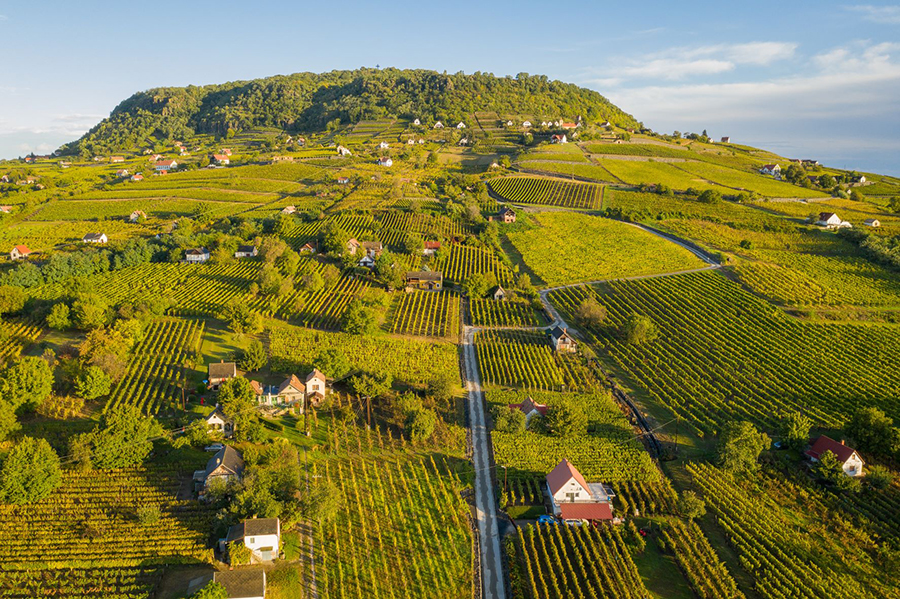
Somló Wine Region (Photo: Courtesy of Visit Hungary)
Balatonfüred-Csopak
Master Sommelier Tamas Czinki, the wine director of Felix Kitchen and Bar, finds Balatonfüred-Csopak especially nice. This white wine district is “where wines and natural beauty meet,” he says. “The region offers a diversity of styles. White wines can be lean and fresh with smokey minerals, and can also be riper with creamy structure and more tropical character.” Czinki also adds that “Balatonfüred wine weeks are known everywhere across the country and last for two weeks in August. It is a good chance for local producers to showcase their products and a great chance for wine lovers to meet with the producers.”
Hajós
Imre Molnár, the owner of Cintányéros, considers Hajós one of the best-kept secrets in Hungary. “The wine region is authentic in terms of producers,“ he says. ”All small, family-owned and operated, real garage wineries [wines produced in small batches].” Molnár’s favorite, a neutral white, with hints of pear and minerals, is Kövidinka, a variety only cultivated in Hajós. This ethnic German village, which has preserved its Swabian culture, is famous for its 1,300 wine cellars filling the streets and creating a charming cellar village. Visit in May to enjoy the St. Orbán Wine Festival.
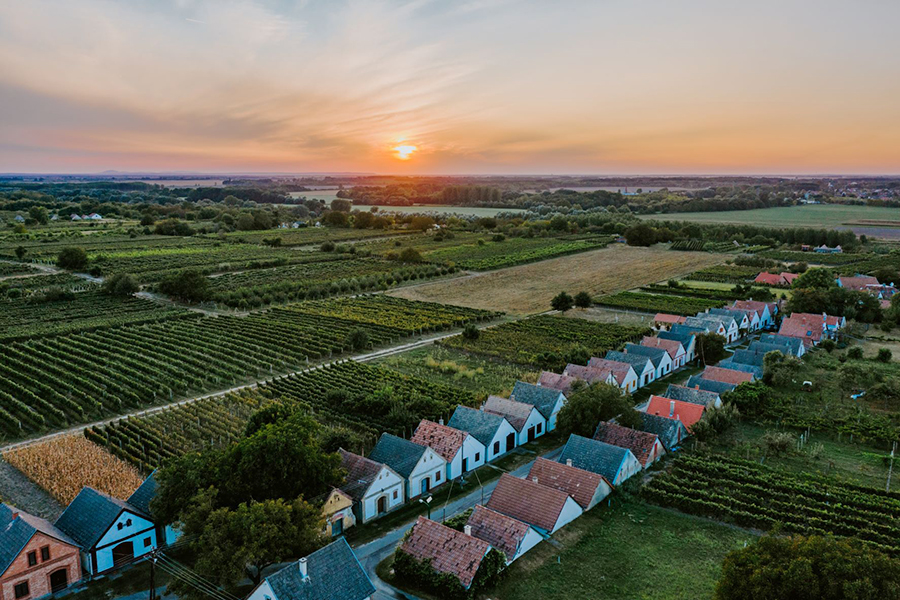
Hajós Wine Region (Photo: Courtesy of Visit Hungary)
Etyek-Buda
Located only about 20 miles from Budapest lies Etyek-Buda, László Czél’s favorite Hungarian wine region. Czél, the general manager of N28 Wine & Kitchen, loves the wines from Szentesi Pince Cellars. “They are cultivating very unique grapes that were almost extinct in the 1800s, such as Feketemuskotály (Black Muscat).” Restrictions for this grape mean that only about 250 bottles are produced annually. While it might smell sweet, the taste is actually light and dry.
Villány
While Gábor Bánfalvi’s favorite Hungarian wine region is Tokaj, he also loves the Villány region which produces Cabernet Franc or, as the locals call it, Villányi Franc, though Bánfalvi thinks the Villányi version beats out any other version from around the world. ”It’s full bodied, but not overwhelming. It has a chewy texture with healthy tannins and acidity, and a spicy, herbaceous, flavor profile with lots and lots of forest fruit and some earthiness. It is a serious wine.” To compliment all that food and wine, he recommends hiking through the vineyards and relaxing in one of the region’s thermal spas.
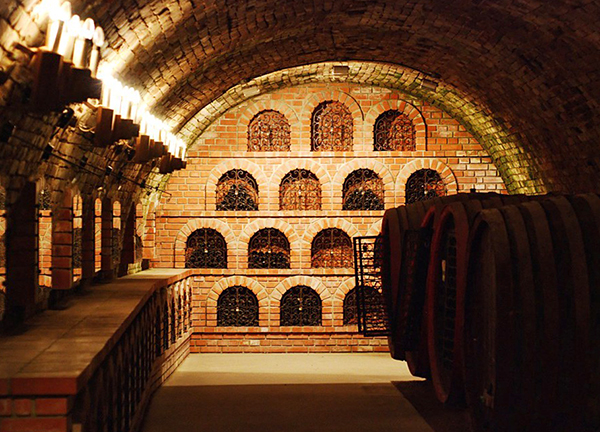
Cellar of Wine Museum in Villány (Photo: Cellar of Wine Museum via Flickr / CC BY 2.0)
Pannonhalma
The UNESCO World Heritage town of Pannonhalma sits in the wine district of the same name, which is Zsolt Pintér’s favorite. Pintér, the CEO of Kóstolom WineBar and WineShop finds the Riesling particularly nice. “They’re very crisp and have a nice acidity; very clean and fresh, and the wines there age well,” he says. He loves the Czurda Winery and Cseri Winery, which produces six different Rieslings. Pannohalma’s Archabbey, home to approximately 50 Benedictine monks, offers visits to the abbey winery and cellars for wine and cheese tasting.
Mátra
One of Hungary’s largest wine districts, Mátra, lies to the south of the mountains of the same name. Péter Kpaornai, the owner and founder of WINE NOT? Hungarian Wine Shop & Bar, knows the district well: “It’s underrated by most people, but thank god more and more customers have started to discover its flawless wines.” Though he has a multitude of favorite wine producers there, he singles out Páger Winery for its unfiltered and low-sulfate Kékfrankos wine. He describes it as, “intense red and blue berries on the nose, while earthy and oaky notes, beetroot and pepper on the palate.”